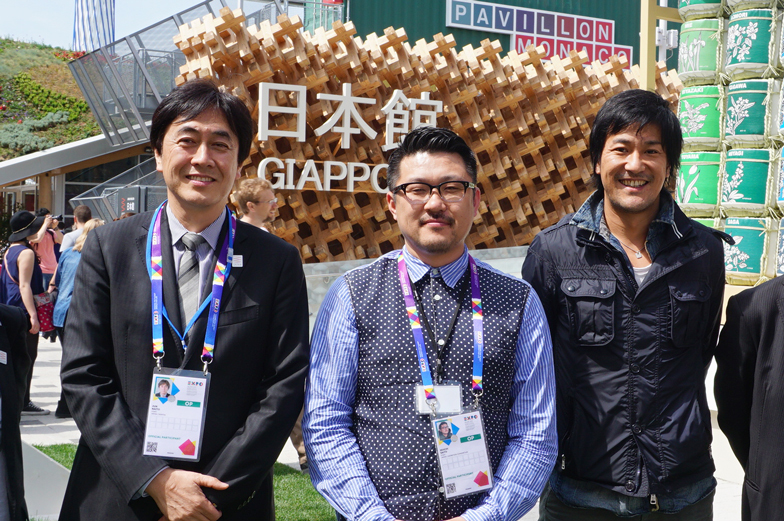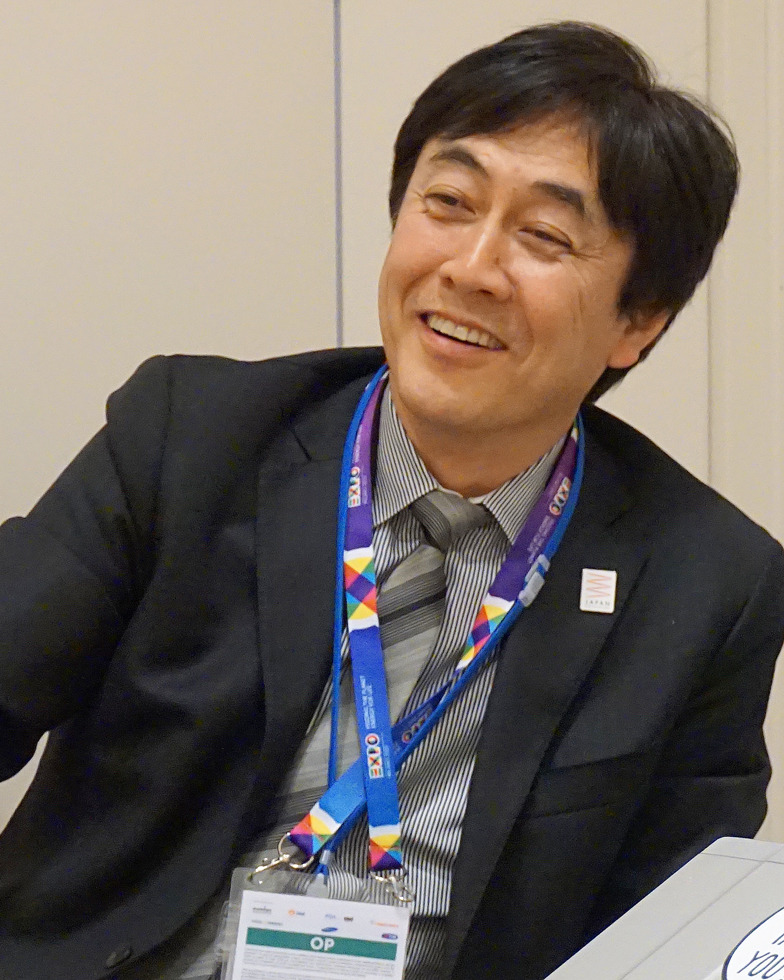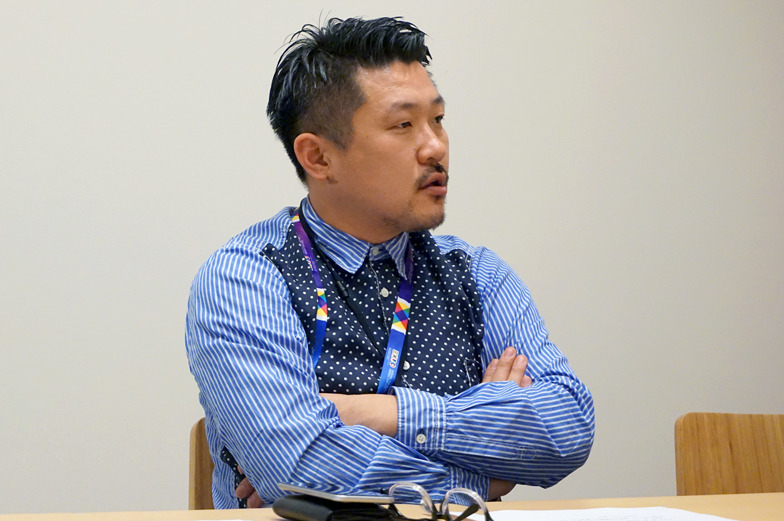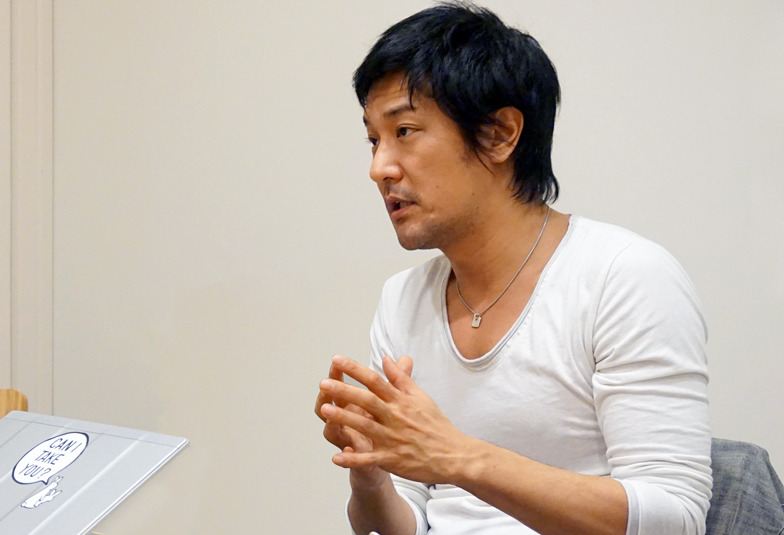Note: This website was automatically translated, so some terms or nuances may not be completely accurate.
Creative Work at the Japan Pavilion, Expo Milano (Part 1)
The Milan International Exposition (Expo Milano) opened on May 1.
With the theme "Feeding the Planet, Energy for Life," over 140 countries and regions are participating.
On the second day of the opening in Milan, Mr. Jun Naito of Dentsu Inc., who produced the Japan Pavilion, discussed the creative intentions behind their respective works at the Japan Pavilion with Mr. Toshiyuki Inoko of teamLab and Mr. Seiichi Saito of Rhizomatiks. Here is the first part of that discussion.
Interview, Editing, and Composition: Aki Kanahara, Dentsu Inc. Event & Space Design Bureau

The Creative Spirit Representing Japan
Naito: Today marks the second day of the Expo. It's still early, but Inoko-san, Saito-san, thank you both so much.
When I was asked to oversee the overall exhibition production for the Japan Pavilion and consulted with both teamLab and Rhizomatiks, I'd like to hear what was your very first thought upon receiving the Japan Pavilion project.
Saito: For us creators in Japan, the EXPO represents Japan's national representation. I'd always hoped to be part of it someday. My father told me powerful stories about the Osaka Expo – meeting foreigners for the first time there, seeing things he'd never seen before, how Japanese culture shifted at that moment. That left a strong impression on me. My first thought was: I want to create something that leaves an equally powerful impression.
We created a theater-style future restaurant called "LIVE PERFORMANCE THEATER." Normally, a theater just has a screen and people sitting down. When I got the request, my first vague idea was to transform the venue into an experiential space—and make it "loud," even though it's a theater. Since "food" was the theme, I wanted something that encouraged communication and conversation. I stuck to that vision all the way through.
Naito: Did you even know what EXPO was back then, Inoko?
Inoko: Of course I knew about EXPO (laughs).
During the Shanghai Expo, I saw the UK Pavilion online and thought it was incredibly cool. Also, the China Pavilion displayed ancient Chinese scroll paintings blown up to enormous scale. TeamLab was founded in the early 2000s, and our initial works were scroll paintings. We digitally reimagined the horizontal scrolls of the "Bird and Beast Play" paintings, so I felt frustrated—I wished we could have done something like that for the Japan Pavilion.
Naito: That Chinese scroll was huge, right!
Inoko: Yeah. It became such a big talking point, I thought, "What the hell? That's frustrating." I'd always thought the Expo sounded incredibly interesting, so when the offer came, I got super hyped.
How to express Japan's "food" and "agriculture"
Naito: This time, the theme is "Food." It's the first time we've tackled content with this kind of direction. Expo themes have typically been "Technology," "Energy," "Environment," and so on. So, the "Food" theme for the Milan Expo felt like a fresh change from the past. And luckily, it coincided with Japanese cuisine being designated a UNESCO Intangible Cultural Heritage.
Did you have a specific vision for how to present Japanese cuisine in relation to this theme?

Saito: When we talk about Japanese cuisine, it's "Japanese spirit, Western technique."
Sushi, kaiseki, traditional restaurants! Plus yakisoba, tempura, street food, pasta, and even Indian curry becoming curry rice. In that sense, Japanese people have an incredibly diverse culinary culture, right?
I thought it would be good to properly convey that reality.

Naito: There's formal kaiseki cuisine, but also casual, fast-food-like eating.
Saito: Exactly. Bringing it all together as Japan's unique cultural culinary heritage.
Naito: In that sense, it might be the first time Japan has communicated its food culture to the world like this. Previously, we promoted each category separately, but this time we showcased the entire spectrum of Japanese food culture, presenting its diversity in an enjoyable way.
Saito: I wish we could have included more, like canned goods.
Naito: Early on, the Ministry of Agriculture, Forestry and Fisheries told us the message shouldn't just be about "food" represented by dishes. They said we needed to include the stories of the production areas.
That's when the word "agriculture" first came up. It refers to the very place where food is first produced – in Japan, that means "rice paddies." Many people at MAFF are really passionate about rice paddies (laughs).
Japanese rice paddies are truly beautiful. Mr. Inoko, when I mentioned rice paddies and Japan's four seasons, did that spark any thoughts for you?

Inoko: Originally, Japanese rice paddies—though they seem like plains now—developed in mid-stream or upper-stream areas of rivers, places with elevation differences, specifically in the mountains.
So they were truly part of nature. Agriculture thrived by utilizing nature.
The fact that rice paddies developed at the center of incredibly complex, multi-layered terrain, and probably the way they perceived the world within that complex space, feels deeply connected to the Japanese aesthetic sense. With that in mind, while there are many messages behind it, given that most people only stay at the Expo for 1-3 days, and with pavilions from all over the world offering an overwhelming amount of information, I wanted to properly abstract it into one message, one Japan Pavilion Expo experience, and create something people from around the world had never experienced before.
Japanese cuisine, of course, has its roots in agriculture. I wanted to abstract and offer an experience of something unique born from that—a Japanese aesthetic sensibility that hasn't developed much compared to mainstream global agriculture.
Naito: When you think of "agriculture," it's easy to fall into analog expressions—like creating a real field inside the pavilion or showing live footage of farmers' smiles and deep wrinkles from daily work. But the visual space Inoko-san created this time uses cutting-edge technology, right?
That must be incredibly fresh for visitors and really sets it apart from other pavilions.
Inoko: Of course, our own culture is fascinating to us because we know it well, and showing that is interesting. But I think that simply ends with seeing something unfamiliar. Seeing the ethnic culture of a country we don't know and thinking "That's cool" is where it stops. Instead, I want to see some kind of universal hint, a hint for the future.
Because the future is something everyone around the world shares an interest in.
The Chinese Pavilion's scroll paintings at the Shanghai Expo were incredible, of course – the Song Dynasty scrolls themselves are amazing. But Italy has Da Vinci's "The Last Supper," which is incredible too. Every country has something extraordinary.
But at the Shanghai Expo, these were presented in contemporary or futuristic forms, so the whole world referenced them. When something becomes a reference point, it naturally becomes a topic of conversation and is talked about for years afterward. I thought it would be great to achieve that level.
Naito: When I was told I had to do something about "agriculture," I wondered what to do. First, I came up with the theme phrase "Harmonious Diversity."
But just saying "harmony between humans and nature" felt like it could become a cliché... That's when TeamLab's Singapore installation caught my eye, and I thought, "Ah, this is it!"
That piece is now the final "Festival" scene in the "Harmony" zone of the Japan Pavilion. It features various people, along with rabbit and frog characters reminiscent of the Chojugiga, all dancing together to festival music. I thought it was incredibly Japanese and futuristic, so I realized, "Yes, it's Inoko-san." I was convinced it perfectly captured the essence of Japanese "farming."
Saito: My friend came to see it and said something interesting. He's French, and his dad runs a winery. He said the mindset of someone who runs a winery is that life only has as many "real performances" as you have years to live. You can only harvest one type of wine per year; if you live 40 years, that's only 40 harvests. He said that's why they hold festivals. Because humans alone can't solve everything, they pray to the gods. All over the world, "farming" and "festivals" are absolutely paired, right? That's probably why we find common ground.
※Part 2 scheduled for publication on Tuesday, May 26
Was this article helpful?